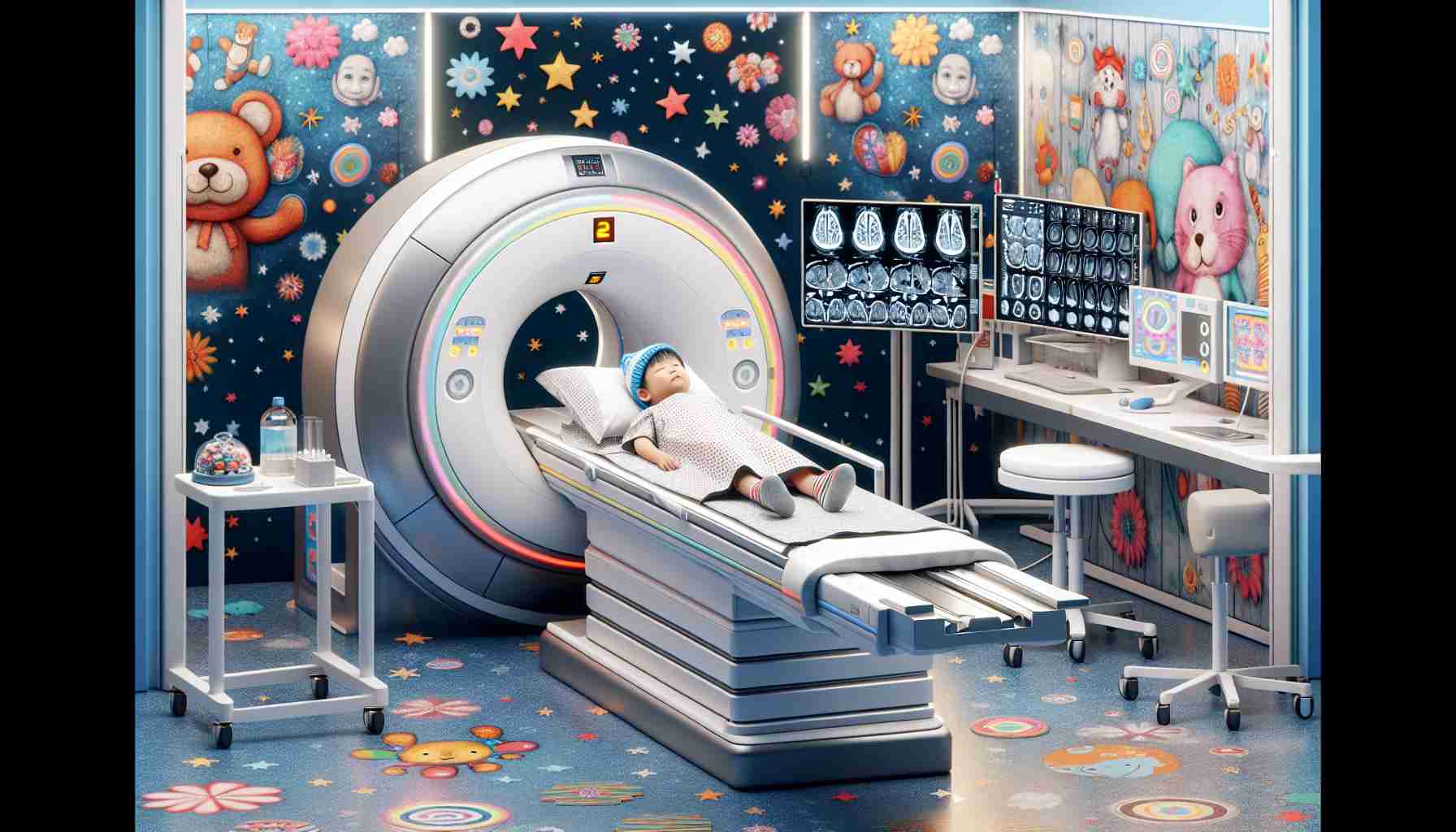- Children’s Hospital of Orange County (CHOC) transforms the MRI experience for young patients through innovative technology and playful interventions.
- Partnership with Royal Philips introduces interactive games and augmented reality tools to alleviate children’s fears of MRI scans.
- The Scan Buddy app educates children at home, offering a friendly, animated guide to the MRI process.
- A miniature toy scanner at the hospital helps demystify the scanning process for children, turning fear into curiosity.
- Bright, engaging displays within the MRI scanner encourage children to remain still by captivating their imagination.
- CHOC’s strategy reduces the MRI backlog and decreases the need for sedation by providing a comforting, engaging experience.
- Trained pediatric staff support this technology, ensuring a holistic, compassionate environment for patients and families.
Amid beeping machines and sterile corridors, a revolution is quietly brewing within the Children’s Hospital of Orange County (CHOC). Here, technology is reshaping the intimidating experience of MRI scans into a playful adventure for young patients, aiming to soothe fears rather than intensify them.
Despite being an invaluable diagnostic tool, MRIs are daunting, even for adults. But for children, the experience can be downright terrifying. Thankfully, CHOC has embraced a creative solution, introducing playful, gamified interventions designed to transform dread into delight. Through a partnership with Royal Philips, they’ve unveiled interactive games and augmented reality designed to gently ease children into the MRI process.
Imagine, instead of sterile instructions, children engage with the Scan Buddy app at home—an animated, friendly guide that educates through playful modules. Children can experiment as budding technologists at the hospital with a miniature toy scanner, which demystifies the scanning process and turns fear into curiosity. Inside the scanner, vivid displays replace apprehension with distraction, encouraging kids to remain still, not out of fear, but because they’re engaged in a riveting journey.
CHOC’s efforts are more than just fanciful; they’ve produced tangible results. The hospital not only reduced its MRI backlog but also reported success in minimizing the need for sedation during scans. Skilled staff, trained in pediatric care, complements this technology-driven approach, creating a holistic and welcoming environment for families.
In a world where the unyielding buzz of an MRI can feel overwhelming, CHOC offers a new narrative—one where technology, compassion, and play converge, proving that even in the clinical landscape, comfort can be just a game away.
Transforming Fear into Fun: How Children’s Hospitals are Revolutionizing MRI Scans
Expanding on CHOC’s Innovation
While the Children’s Hospital of Orange County (CHOC) is at the forefront of using technology to make MRI scans less daunting for children, this innovation is part of a broader movement in pediatric healthcare. Here are additional insights not included in the original article:
1. Virtual Reality (VR) Applications: Beyond augmented reality, some hospitals are exploring the use of VR headsets to immerse children in calming environments during scans. This can significantly lower anxiety levels.
2. Customized MRI Environments: Hospitals such as Boston Children’s Hospital provide themed MRI rooms that mimic spaces like a pirate ship or outer space. This environmental customization helps in soothing children’s nerves.
3. Innovative Techniques in Patient Communication: Research emphasizes participatory design, where children are involved in creating procedural narratives or comic strips about their MRI experience, making them feel more in control and less anxious.
4. Broad Benefits Beyond Anxiety Reduction: These approaches not only reduce fear but also cut down on scan times and the need for anesthesia, which can lead to a quicker recovery and lower risk for adverse effects.
Important Questions and Answers
– How do technological interventions improve patient outcomes?
Technological interventions like gamification and AR provide emotional satisfaction and a sense of control over the MRI process, which can lead to better patient cooperation, reducing the need for repeat scans and sedation.
– What are the psychological benefits of these technological aids?
By transforming the MRI experience into a game, children can experience lower stress levels and increased comfort, which are crucial for a positive hospital experience.
– Can these technologies be applied to other medical procedures?
Yes, these technological approaches can be adapted for other diagnostic and treatment procedures, such as CT scans, blood tests, and pre-surgery preparation, ultimately creating a comforting environment in various healthcare settings.
Suggested Links
– Children’s Hospital of Orange County
– Royal Philips
– Boston Children’s Hospital
By integrating technology, compassion, and play, pediatric hospitals around the world are changing how children experience medical procedures, emphasizing a soothing and interactive environment that mitigates fear and fosters cooperation. This blend of technology and compassionate care heralds a new era in child-friendly healthcare.
